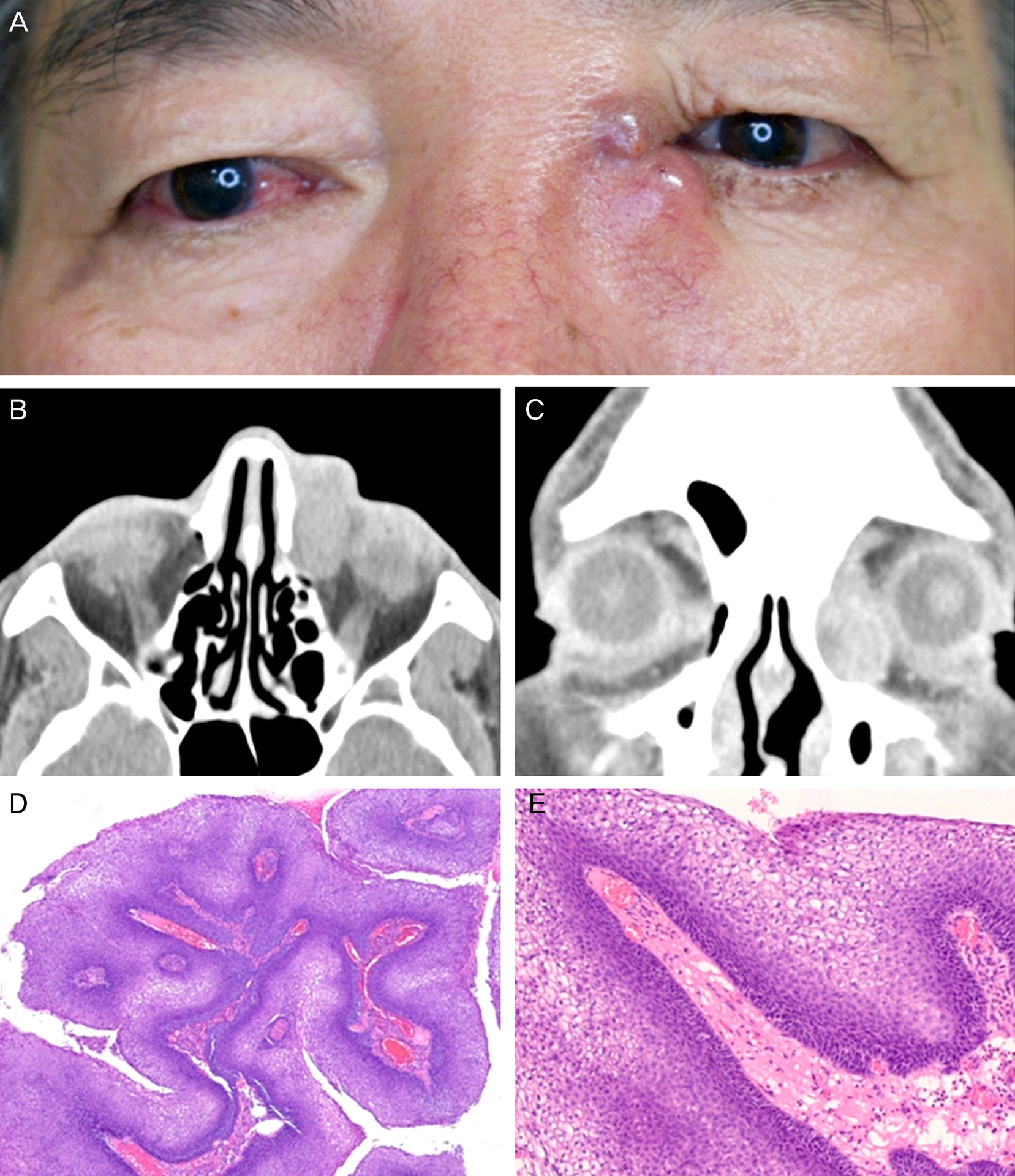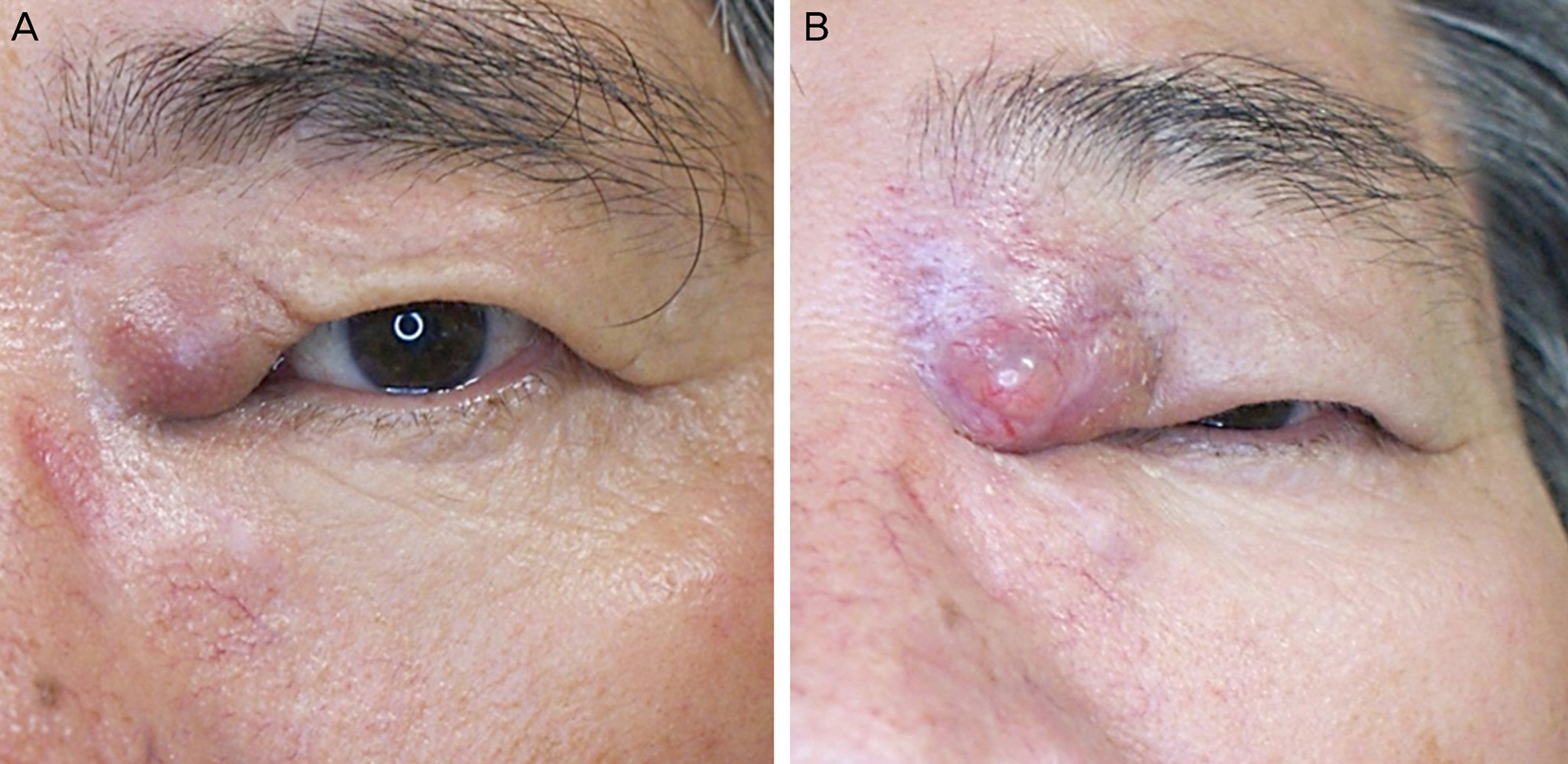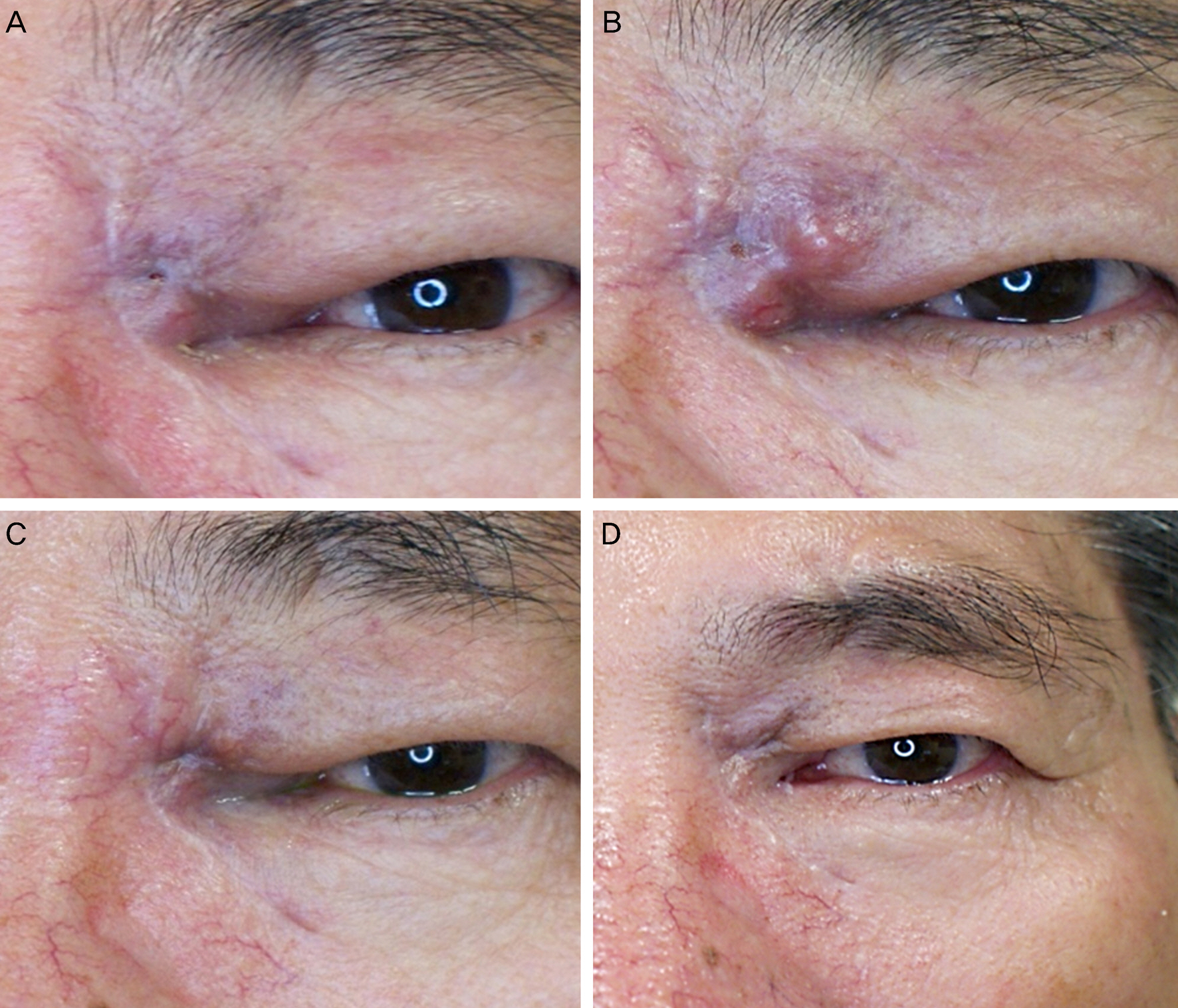J Korean Ophthalmol Soc.
2014 Aug;55(8):1218-1223.
A Case of Intralesional Cidofovir Injection for Recurrent Lacrimal Sac Squamous Papilloma
- Affiliations
-
- 1Department of Ophthalmology, Yeungnam University College of Medicine, Daegu, Korea. sjh@med.yu.ac.kr
Abstract
- PURPOSE
To report a case of treating a patient with intralesional cidofovir injection who had frequently recurring lacrimal sac squamous papilloma after several excision surgeries.
CASE SUMMARY
A 59-year-old man who had mass excision surgery at a different clinic nine months previously, visited our clinic to treat a recurring erythematous protruding mass near his left medial canthus that developed two months prior. Orbit CT showed a 15 x 25 mm-sized large mass located on the lacrimal sac adherent to medial orbital wall. An excision biopsy was performed and the histopathologic examination showed typical findings of squamous papilloma. Because the tumor recurred six months after the second surgery, we decided to perform adjuvant therapy using the antiviral agent cidofovir. The patient was treated with a 5 mg/mL intralesional cidofovir injection every three weeks. A transient recurrence presented on the upper lid at the third intralesional cidofovir injection site two months after the surgery, but the recurrent lesion improved after repeated injections. During the 12 months of follow-up, there were no complications and no evidence of recurrence.
CONCLUSIONS
Intralesional cidofovir injections can be a safe and effective treatment for the management of recurrent squamous papilloma of the orbit, especially after total excision.
MeSH Terms
Figure
Reference
-
References
1. Hung SL, Ma L. Recurrent lacrimal sac papilloma: case report. Chang Gung Med J. 2000; 23:113–7.2. Madreperla SA, Green WR, Daniel R, Shah KV. Human papil-lomavirus in primary epithelial tumors of the lacrimal sac. Ophthalmology. 1993; 100:569–73.3. Sjo NC, von Buchwald C, Cassonnet P, et al. Human papillomavirus: cause of epithelial lacrimal sac neoplasia. Acta Ophthalmol Scand. 2007; 85:551–6.
Article4. Weber RS, Shillitoe EJ, Robbins KT, et al. Prevalence of human papillomavirus in inverted nasal papillomas. Arch Otolaryngol Head Neck Surg. 1988; 114:23–6.
Article5. Krouse JH. Endoscopic treatment of inverted papilloma: safety and efficacy. Am J Otolaryngol. 2001; 22:87–99.
Article6. Lawson W, Kaufman MR, Biller HF. Treatment outcomes in the management of inverted papilloma: an analysis of 160 cases. Laryngoscope. 2003; 113:1548–56.
Article7. Vural E, Suen JY, Hanna E. Intracranial extension of inverted papilloma: An unusual and potentially fatal complication. Head Neck. 1999; 21:703–6.
Article8. Chaudhry IA, Taiba K, Al-Sadhan Y, Riley FC. Inverted papilloma invading the orbit through the nasolacrimal duct: a case report. Orbit. 2005; 24:135–9.
Article9. Elner VM, Burnstine MA, Goodman ML, Dortzbach RK. Inverted papillomas that invade the orbit. Arch Ophthalmol. 1995; 113:1178–83.
Article10. Williams R, Ilsar M, Welham RA. Lacrimal canalicular papillomatosis. Br J Ophthalmol. 1985; 69:464–7.
Article11. Snoeck R, Wellens W, Desloovere C, et al. Treatment of severe laryngeal papillomatosis with intralesional injections of cidofovir [(S)- 1-(3-hydroxy-2-phosphonylmethoxypropyl) cytosine]. J Med Virol. 1998; 54:219–25.12. Bielamowicz S, Villagomez V, Stager SV, Wilson WR. Intralesional cidofovir therapy for laryngeal papilloma in an adult cohort. Laryngoscope. 2002; 112:696–9.
Article13. Lee AS, Rosen CA. Efficacy of cidofovir injection for the treatment of recurrent respiratory papillomatosis. J Voice. 2004; 18:551–6.
Article14. Hoffman VF, Skiest DJ. Therapeutic developments in cytomegalovirus retinitis. Expert Opin Investig Drugs. 2000; 9:207–20.
Article
- Full Text Links
- Actions
-
Cited
- CITED
-
- Close
- Share
- Similar articles
-
- A Case of Squamous Cell Papilloma of the Lacrimal Sac
- Squamous Cell Carcinoma in the Lacrimal Sac of Young Patient Who Had Conjunctival Squamous Papilloma
- Cidofovir Intralesional Injection for RecalcitrantCommon Warts: A Comparison with Sodium TetradecylSulfate Intralesional Injection
- A Case of Squamous Cell Carcinoma of the Lacrimal Sac
- A Case of An Inverted Papilloma Originating From a Lacrimal Sac




